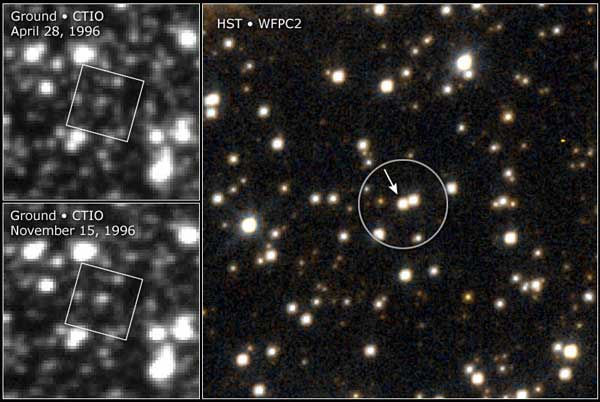Explanation: A black hole glides silently through space. Is there any way to know it's there? Until last week, all objects that might be black holes in our Galaxy were part of binary star systems. There, gas from the companion star was hypothesized to swirl around the black hole, heat up, and emit X-rays before falling in. Last week, however, analysis was released of a mysteriously dark object that floated in front of a distant background star, dramatically increasing this star's light by the lens effect of its gravity, as pictured above. The high mass and low light of this strange lens have astronomers guessing they might just have detected a lone black hole, weighing in at six times the mass of our Sun. The existence of isolated black holes is not in itself surprising, as they should be the end result of the cores of massive stars.
1999 2000 2001 2002 2003 2004 2005 2006 2007 2008 2009 2010 2011 2012 2013 2014 2015 2016 2017 2018 2019 2020 2021 2022 2023 2024 2025 |
Январь Февраль Март Апрель Май Июнь Июль Август Сентябрь Октябрь Ноябрь Декабрь |
NASA Web Site Statements, Warnings, and Disclaimers
NASA Official: Jay Norris. Specific rights apply.
A service of: LHEA at NASA / GSFC
& Michigan Tech. U.
|
Публикации с ключевыми словами:
black hole - gravitational lens - черные дыры - гравитационное линзирование - гравитационная линза
Публикации со словами: black hole - gravitational lens - черные дыры - гравитационное линзирование - гравитационная линза | |
См. также:
Все публикации на ту же тему >> | |
